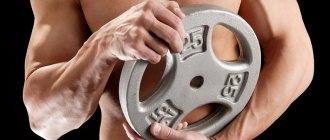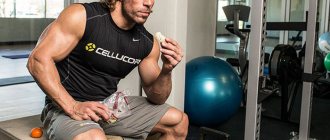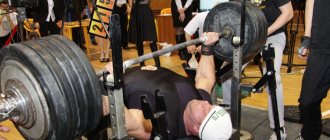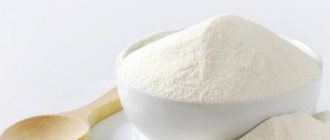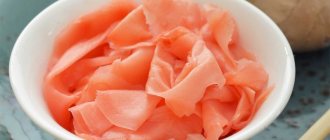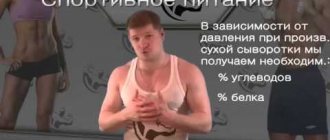Purpose of the gainer
Gainer, first of all, is suitable for ectomorphs, people who are not overweight and naturally thin. When you add several servings of the drink to your regular diet and exercise in the gym, your body weight begins to increase. People who are prone to obesity are not advisable to use gainers, as the excess calories will go into body fat. They need to consume slow carbohydrates and protein supplements.
The gainer is suitable for athletes exposed to aerobic exercise (football players, boxers, track and field athletes, etc.). Taking it before training gives a high boost of energy and restores strength after exercise. If you follow a diet and eat right, you can easily maintain your desired weight level.
Eat healthy, protein-rich foods
This is also an obvious rule, but how much and what foods you take can make a huge difference to your progress.
Start with 1 gram of animal protein per kilogram of body weight and gradually increase to 1.5. Over time, as you progress, increase to 2 kg. I prefer eggs, steak, whole milk, 4% fat cottage cheese, kefir, salmon and at least 88% ground beef. Bodybuilders appreciate chicken fillet, tuna and white fish, this will suit you during your diet. You'll need saturated fat and cholesterol to keep your testosterone levels high. However, eat a diet rich in high-quality animal protein. Highly fatty foods such as hot dogs, mayonnaise, cheese, bacon and fast food often lead to protein deficiency and overload the digestive system, preventing your next meal from arriving on time. The squeamish may not want to hear this: fast food can consist of up to 90% fat and be stuffed with bones and tendons, which will be unnecessary for your body. Five meals a day, each with 40-50 grams of protein, is a good place to start.
Gradually train your metabolism. Do not consume more than required. Start with what you can eat and add calories every week or two, making sure your workout needs increased intake. Add carbohydrates to fats and proteins to boost energy before workouts and avoid catabolism. Stay away from white flour products and stick to healthy portions of oatmeal, rice and potatoes. In the world of powerlifting, “mass pushes mass”—increase calories gradually to increase mass.
Train hard
Shouldn't that have come first? Nope. Everything you do in the gym breaks down muscle tissue. All growth occurs in the recovery phase (eating and sleeping), so lifting weights is not the most important part of the program. The coolest thing about being a beginner is the fact that any weightlifting program that includes a proper recovery regimen (eating and sleeping) will produce results. There is no best program - it all depends on your goals. Lift heavy loads for multiple sets of about five reps using core, multi-joint mass-building exercises—squats, deadlifts, push-ups, pull-ups, presses, rows—for an hour several times a week, and you'll get bigger and stronger . No need to load, guys. Just be consistent and train hard.
Drink water with a little salt
Water is better absorbed with salt. You can drink as much as you want, but if you're not taking in enough sodium, then most of that water will go to waste along with your useless megadoses of vitamins (more on those below).
New research shows that cardiovascular problems can be caused not only by excessive salt intake, but also by its lack. Salt is a more powerful enhancer than creatine. Sodium increases the absorption of amino acids and the storage of carbohydrates. Remember neurons from Basic Biology? Then hopefully you remember that every muscle in your body contracts due to a chemical reaction between these neurons called sodium potassium adenosine triphosphatase (or "pump")
Most of us simply need to know that when consumed regularly in moderation, coupled with a consistent training regimen, salt can be a powerful performance enhancer. Your body can't store sodium for later use, so you'll need the recommended 3g per day plus 1-2 for your load.
(NOTE: Those with a predisposition to heart disease or high blood pressure should talk to their doctor before increasing their salt intake. The number shown is for guys who exercise hard.)
Set goals and track progress
I have a spreadsheet that I've been filling out for years. On one side there are dates, on the other there is a list of daily requirements. Every day I cross out the lines in it. The goal is to be honest with yourself. Everything I mentioned above is included in this list. I weigh myself every morning and write down the results. I write how many times I ate that day, how much I slept at night, if I slept at all. I check everything carefully, note my progress, if I trained that day, and so on. I do this because I know that my success is completely under my control and if I do everything I am supposed to do, I will achieve my goal.
When I take blood tests and find something that needs fixing—whether it's low or high iron or hemoglobin A1C or cholesterol rising during certain phases of exercise—I can quickly make adjustments to my diet and supplement program and track it until the next test - to find out if the problem has been resolved.
Never underestimate the importance of setting goals and tracking your progress to gain weight properly. I want to be able to measure my progress daily, weekly, monthly and yearly to be accountable and confident that my goals are being achieved.
Cardio for gaining muscle mass
Aerobic exercise and its superpower.
More and more often I am asked in a confidential whisper about the secret formula for gaining muscle mass, from which I concluded that the main three pillars: “Eat, pray, love” “Train, eat, recover”, few people are already satisfied with.
Give everyone a magical composition of anabolic steroids, seasoned with recommendations from Internet gurus like “abs in 2 weeks without leaving the couch”... well, not from the toilet. Therefore, following the demand, I decided not to upset you and tell you in this article about anabolic steroids, about these amazing drugs that can accelerate muscle growth. In particular, we will talk about one physiological stimulant, whose name is Aerobic exercise. Don’t try to re-read the previous sentence and believe your eyes, I was not mistaken, we are talking about aerobic exercise and its superpower in building muscle mass.
Recently I witnessed a fascinating story from one specialist at a seminar about the detrimental effect of running on muscle mass, and today I came across an article by a reputable biochemist, supported by the results of an entire research institute that running 3 times a week for more than 25 minutes reduces the strength performance of athletes. The further I put off writing the article, the more “signs” come that it’s time to make public the results of my observations of this “wonderful miracle” - aerobic exercise and tell the world about the pros and cons of its use in the process of muscle building.
So!
Aerobic exercise (cardio exercise) is a type of physical activity that causes a chemical reaction in the body of pyruvate, previously obtained through the process of glycolysis, and oxygen, followed by the release of energy (ATP), carbon dioxide and water. Running and walking are the most accessible ways of aerobic activity, and modern fitness centers provide a wide selection of cardio equipment for “diversity of monotony” - rowing, elliptical, steppers and bicycle ergometers, the main thing is to keep your heart rate in the aerobic range.
Observations.
I was puzzled by the question of the influence of cardio training on anabolism even during the preparations for my first “trips” to competitions. My attention was drawn to the fact of the colossal loss of fat with a minimal decrease in volume. You just start to believe in the “dummies” theory about the transformation of fat into muscle. In addition, the weight on my bar continued to increase along with the intensity and number of repetitions tending to double so that the only thing that stopped me from breaking records was the fear of getting injured two weeks before the competition. It is noteworthy that during the “meat gain” period I could not boast of such agility; every attempt to reduce the rest between approaches resulted not only in severe shortness of breath, but also in working out the muscle group by only 50% in the next approach.
Experiment stage.
After all the competitive executions on the body with subsequent libations in the form of “Poppy” and other mega-portions of simple carbohydrates (in professional circles this period of gluttony sounds much more noble - “supercompensation”), I decided to drink some water and lose five kilograms (my legs are not government-issued ones) and turn the pedals for three weeks, pushing strength training further away—putting your muscles on vacation.
As a result - minus 6 kilograms, expressive relief with full muscles and a difference in weight (relative to competition) - plus 4 kg in meat. I was pleasantly surprised by my attempt at posing - confident control over the muscles, a crazy pump and no shortness of breath, which could not be said about competitive posing. All this gave rise to the idea of a non-trivial way of approaching competitions, which subsequently worked to the point, but this is the topic of a separate article.
This trend inspired me to go further and reconsider my training process during the recruitment phase. The choice fell on high-intensity training with preliminary fatigue, double the number of repetitions and minimal rest between the ligaments. The body liked this variety and rewarded it with a confident increase in strength indicators, and muscle mass happily crawled up the scale. A pleasant bonus was that the moment of muscle acidification occurred much later.
But the music didn’t play for long, and after a four-week intensive, my endurance began to fail me and decreased from workout to workout. Attempts to help the recovery process with an additional day of rest and an increase in caloric intake resulted in an increase in “fat” in the lower abdomen and minor injuries from struggling for additional weights on the barbell, despite a decrease in the number of repetitions. I diagnosed myself as “overtraining” and decided to take a couple more weeks “at my own expense.” But I was not used to resting on vacation, and therefore I decided to “polish” the fat I had acquired through back-breaking labor with the help of cardio, which was also very desirable for the heart for better adaptation to the increased mass.
And then insight descended! What if the stumbling block was cardio? Or rather, its presence BEFORE and absence during work on the ground.
Having gone through all the cogs of our training mechanisms, from intensive to strength, scattering the cycles so that the aerobic load was cycled from normal walking to interval running, combining the cardio load so that it came immediately after the anaerobic load and taking a partner for the purity of the experiment, we began testing a new for us a method of gaining muscle mass.
The result was obvious - a low level of body fat, a significant increase in body weight and volume, and impressive endurance, which made it possible to cope with the task of super-concentration.
Stage of exposing stereotypes.
When starting a debriefing regarding such concepts in bodybuilding as endurance, strength and muscle growth, you first need to become familiar with the types of muscle fibers, their mechanical and metabolic properties and the inherent features of their biochemical processes.
Type 1 - slow oxidative fibers (red or aerobic fibers)
These are muscle fibers, thanks to which our body is able to withstand prolonged physical activity of relatively low intensity. Their characteristic feature is a thin cross-sectional diameter, a low contraction speed, they are quite weak, but their main feature is a high concentration of mitochondria - the energy stations of our body.
Here, many “jocks” will give up in disappointment at such useless “helpers” and will rush to join the clan of admirers and growers of fibers of the second type, since, according to many experts, they are the ones who are able to give remarkable mass and heroic strength.
Type 2 - fast glycolytic fibers (white or anaerobic)
This type of fiber, in contrast to type 1 fibers, has a significantly larger diameter, better contraction speed, and strength indicators are simply amazing. But, alas, the concentration of mitochondria in them is much lower compared to type 1 fibers.
It is precisely this fanatical fixation on training “fitting the description” muscle fibers that dooms 90% of all bodybuilding enthusiasts to appear on stage year after year in approximately the same competitive form (we are talking about muscle mass). We have well learned the theoretical part of anatomy and, methodically following the instructions, we pump the same muscle fiber, which, perhaps, is not glycolytic at all, because the percentage of fibers in the muscles is genetically predetermined and there is a limit to everything.
Many will object, appealing to the pros, but I don’t interfere with the “aliens”, honestly allocating them their 10% in the community. In addition to their knowledge of converting one type of fiber to another, their bodies also have a genetic preponderance of highly responsive glycolytic fibers. But reformatting is something that we can make a reality. This means it’s time to remember the existence of intermediate fibers, and this is an additional bonus on the meter scale with which you have been measuring your biceps every day for many years now, complaining about the plateau.
Type 3 (2a) – intermediate fibers.
I would characterize them as transitional. To produce energy, they do not disdain either oxidative or glycolytic metabolism. And, depending on a person’s physical activity, they are able to adapt to any load (aerobic or anaerobic) and, as it were, reformat into the first or second type.
How is energy generated in muscle fibers for contractile actions in a muscle?
ATP molecules are the main source of energy for the functioning of our body. I will not go into the detailed chemical process of transformations and reactions, but I will say that energy replenishment in the muscles occurs in three ways:
- Phosphate (breakdown of creatine phosphate). The fastest available source, but the reserve of creatine phosphate in the muscles is enough for only a few seconds of intense work, after which the body needs several minutes (up to 5 minutes) to recover. This ATP pathway is used in explosive sports activities such as sprinting and jumping.
- Oxygen (oxidation of organic substances or aerobic). In such reactions, oxygen plays an important role, which oxidizes carbohydrates and fats to produce ATP. This energy pathway is used in activities where endurance is important. Glycogen reserves in the liver and muscles are enough for about an hour and a half of aerobic work, after which the body switches to the utilization of fat, the reserves of which are very difficult to exhaust.
- Lactate (glycolysis, anaerobic). The transformation occurs without the participation of oxygen and with the formation of two molecules of lactic acid. The initial product of glycolysis is glycogen. The lactate energy pathway is used during high-intensity exercise that lasts a couple of minutes or, for example, when the intensity increases, such as in jerks or finishing throws, then the intensity of the exercise decreases sharply due to the accumulation of lactic acid, which takes 20 minutes for the body to remove. up to one and a half hours.
Mitochondria and myofibrils - what kind of animals they are and how to tame them.
Mitochondria is the energy station of the cell and the energy generated in it in the form of ATP provides energy supply to our body. The maximum concentration of mitochondria occurs in slow muscle fibers, which are responsible for aerobic processes, namely endurance. Therefore, it is generally accepted that athletes who are genetically predisposed to a predominance of oxidative fibers achieve success in sports such as running, biathlon, and cycling.
The question immediately arises: what is the reason for the ability of slow muscle fibers to withstand such long physical activity? - The ability not to become acidic! Since one of the stages of energy conversion with the help of oxygen is able to convert lactic acid into energy again.
Myofibrils are the contractile apparatus of muscle fibers; our strength indicators and the speed of muscle contraction depend on their quantity. This is why they say that the weight our muscles lift is directly proportional to their volume. Since as myofibrils grow, we increase the muscle fiber, and during the training process we use an increasing number of them, we expose the overall diameter of the muscle group to growth.
But in fact, the growth of myofibrils is not such a quick and easy process. For professionals, this happens more actively due to the use of stimulating hormonal drugs, while for amateurs everything is much more complicated, even with a properly balanced diet that fully satisfies the body’s needs for nutritional supplements.
Progress in strength training will be permanent, provided that the recovery process is properly organized. In addition, it is necessary to clearly select a training program that would not only provoke the nervous and hormonal system to release the main factors of myofibril growth - growth hormone and testosterone, but also would not become a “killer” of our cells in the process of acidosis, in which the breakdown of lactic acid in the time of anaerobic glycolysis into hydrogen cation and lactate cation promotes the penetration of hydrogen ion (proton) into the cell and disruption of chemical processes within the cellular structure. Their high concentration activates catabolic processes, but we must not forget about the positive effect of hydrogen ions on the activity of some enzymes that promote muscle hypertrophy, and the advantage of lactic acid is its ability to increase testosterone levels.
Having understood a little about the processes of energy supply, the influence of the development and increase in mitochondria, predominantly concentrated in slow oxidative fibers, on anabolism, which requires ATP in as large quantities as possible, becomes obvious. The determining factor here is the ability of mitochondria to move throughout the cytoplasm and accumulate in those areas where energy consumption is highest. Through well-formed aerobic training, including periodization of training cycles and load intensity, we achieve an increase in the number of mitochondria, which, being next to the myofibrils, literally entwining them, leaving no free space, provide them with ATP, which gives us not only the opportunity train more intensely, but also get rid of accumulated lactic acid much faster between sets.
After all, the cause of stagnation and the stumbling block is precisely the inability to quickly restore muscles due to the slow removal of lactic acid. Thus, our task of reformatting is to increase the number of mitochondria in intermediate fibers, and even in glycolytic ones, which will help ensure myofibril hyperplasia with increasing power load.
Under the condition of enhanced protein nutrition, mitochondrial growth is a fairly rapid process. You can reach their peak development in a couple of months of proper training, followed by maintaining your acquired wealth.
And the training process itself must be composed of:
- strength training in the maximum number of repetitions and 40-50% load until a burning sensation begins in the muscles;
- cardio exercises with alternating intensity modes up to the initial limit of the oxidative process (burning sensation in the muscles).
By awakening the functionality of dormant fibers and trying to reformat them, we are able to overcome the period of stagnation and add a lot more to genetics.
Train smart!
Your trainer Vyacheslav Volosov.
You might be interested
The importance of intensity
The intensity and duration of the exercise are even more important than the type of exercise. We find that long-term fat loss is least pronounced with moderate but very long-term cardio exercise. And the most noticeable weight loss can be achieved through short, high-intensity sessions, such as sprinting. We also found that the longer the aerobic training, the greater the loss of lean mass. At the same time, we recorded an extremely slight decrease in muscle mass and strength indicators against the background of short (no more than 20 minutes per day) cardio exercises.
“What about the fat burning zone?” - you shout from the treadmill. You are, of course, referring to the study conducted in the early nineties by Dr. Romijn. He concluded that we burn the lion's share of fat during long (45-60 minutes) aerobic exercise at moderate intensity (no more than 65% of maximum heart rate). The consequence of this experiment was the emergence of “fat burning” programs in almost all cardio equipment. However, the Achilles heel of this study is that the processes occurring in the body during exercise do not always correlate with the long-term consequences of training. And this is what I want to draw your attention to!
Long-term cardio exercise reduced muscle volume, and sprinting increased muscle volume
Our laboratory recently conducted such an experiment. We compared low-intensity, long-duration (60 minutes) aerobic sessions with 4-10 sprints at maximum speed for 10-30 seconds. As we thought, prolonged cardio exercise had a negative effect on muscle volume. And now attention: surprisingly, sprinting increased muscle volume. Conclusion: sprinting has an anabolic effect and at the same time promotes drying and creating relief!
Let's put it all together
I know a lot of people have the same thought: “If all this is true, then why are so many bodybuilders finding success with long-term, low-intensity cardio? It turns out that in their case it worked...” The answer is: it’s not that long aerobic sessions aren’t effective at burning fat—they are. The question is, what should you do as an athlete to optimize your training process and achieve maximum results in the shortest possible way? In our case, the answer is obvious: high-intensity sprinting leads to greater fat loss than jogging. In addition, sprinting preserves and perhaps even increases muscle mass.
On the other hand, not everything is so simple with a sprint; it requires the right systematic approach. Bodybuilders seeking to reduce fat mass should perform 4 to 10 sprints at maximum speed for 10-30 seconds. When I talk about top speed, what I mean is that at the end of the race you should be gutted. However, I advise you to start with lower intensity and gradually raise the bar.
Once you get into shape, which will take about a month, you should schedule your sprint runs. For example, if you are planning three sprint sessions per week, I recommend doing one short, very intense session of six ten-second hill sprints, and one moderate-intensity session of six fifteen-second flat sprints. The last workout should be the longest - four thirty-second sprints at top speed. Additionally, I am a big fan of exercises such as pushing a car, pulling or pushing a trailer, etc.
And one last thing. Try to separate your cardio and leg training by at least one day. Our laboratory, and others too, have proven that cardio affects the working muscle group. So if you did a high-intensity cardio workout for your legs today, it will directly activate muscle growth in that anatomical area. Research has shown that at least 24 hours should pass between cardio and leg training. Otherwise, you risk slowing down your growth.
This may sound preachy, but think about the time you'll save by not spending hours on the treadmill. It's definitely worth adding an extra item to your workout schedule.
